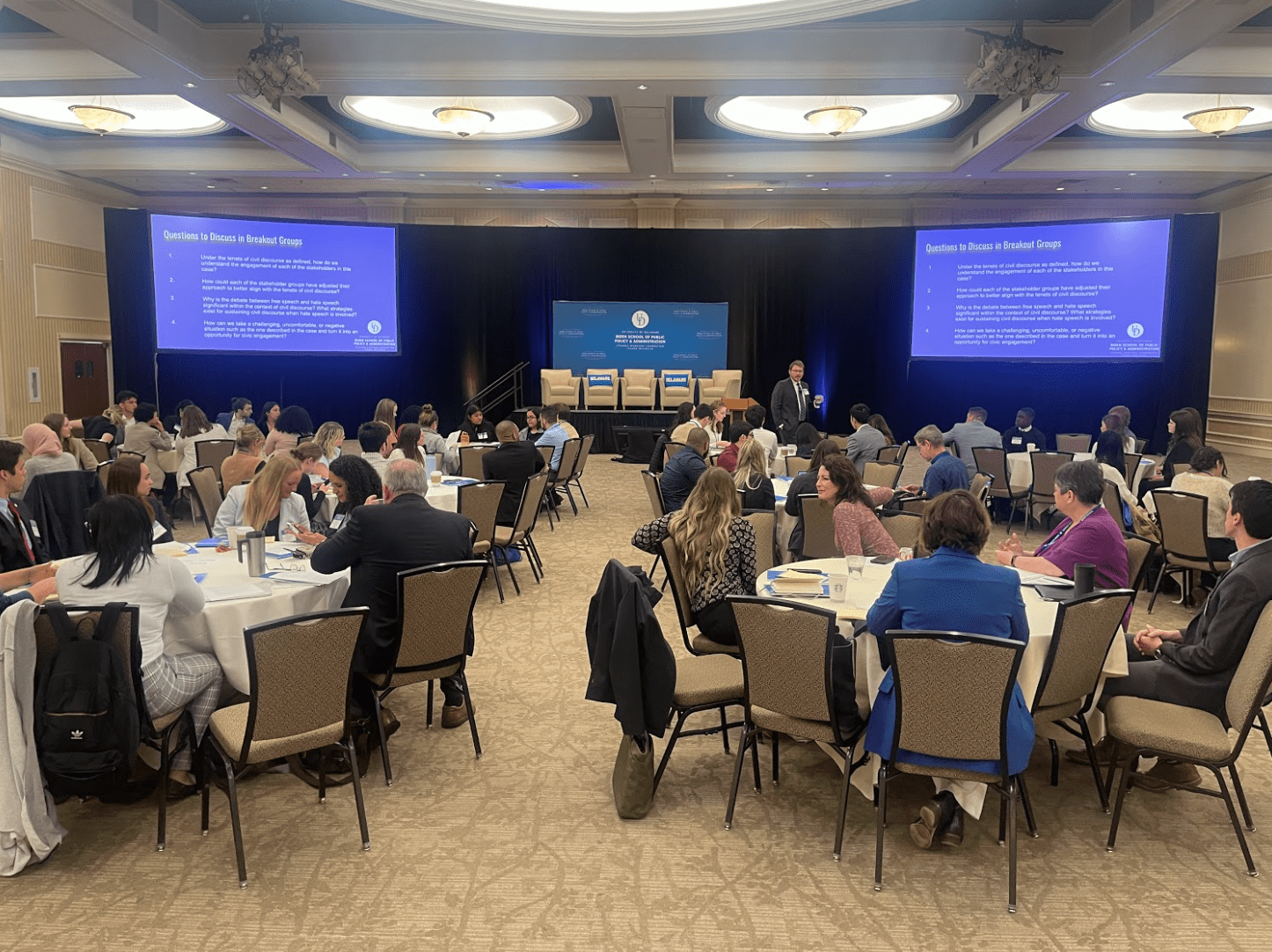
Making Connections at the Biden Institute
In this week’s blog, Communications Assistant, Priana Aquino, (left) reflects on her experience at the inaugural National Student Dialogue sponsored by the Stavros Niarchos Foundation. Learn how she engaged with public service students from universities throughout the country, and her main takeaways from the experience.
“Want to go to a summit?” was the subject line at the top of my inbox earlier this semester. Intrigued, I opened the email sent to me by Sr. Director, Derick Brown, and found an invitation to the University of Delaware’s Biden Institute National Student Dialogue. USF was one of 18 other schools invited to this conference that promised to be an opportunity for like minded peers around the country to engage with and learn from each other. I was familiar with the Biden Institute through our partnership in the Equity Interns summer program, but could not have imagined having the opportunity to actually go and visit.

A few weeks later, I found myself on a 5:30 AM flight to Delaware, unsure and curious about the experience I would have throughout the weekend. After a long day of travel, I had no time to be nervous as I was immediately thrown into a whirlwind of introductions and opening statements. At the welcome event hosted by the Biden Institute on the University of Delaware campus, I met students from the universities that were represented and chatted about where we were from and shared our initial worries about the conference. We were all greeted by Valerie Biden Owens, President Joe Biden’s sister and Chair of the Biden Institute, who expressed her joy in seeing students from all parts of the U.S. come together. As fun as this first event was, I knew that the heaving lifting was ahead.
Formally called the Stavros Niarchos Foundation (SNF) Ithaca Initiative National Student Dialogue, the student dialogue aimed to help students in developing civil discourse tools and skills— things that seem absent in today’s political climate. To supplement the discussion, each college in attendance was asked to bring a civility issue that was prevalent in their respective campuses to workshop. The first official day of the conference, University of Delaware students presented a case study modeling the discussion each school would have to employ to create solutions for their campuses. Their civility issue focused on a right wing group that came to protest on their campus and how students can engage with them in a non-violent way in the future. We broke up into four groups to discuss the case study amongst ourselves. Each conversation was moderated by a student in the UD cohort who helped us identify stakeholders in the situation and the tenets of civil discourse present.
 Another interesting part of the conference was the panel discussion between multiple administrative members of the public service centers participating in the conference. Each of them spoke about how their respective schools dealt with civility issues, Without this opportunity to network, I would never have heard about the work that other universities were doing to promote social justice on their campuses. Furthermore, I was able to share the programs that the McCarthy Center had with people who had never heard of us, much less the University of San Francisco. It was comforting to see how many other schools were out there with missions similar to the McCarthy Center, and more special to meet and hear from a few of the students and faculty members that were dedicated to their own public service centers.
Another interesting part of the conference was the panel discussion between multiple administrative members of the public service centers participating in the conference. Each of them spoke about how their respective schools dealt with civility issues, Without this opportunity to network, I would never have heard about the work that other universities were doing to promote social justice on their campuses. Furthermore, I was able to share the programs that the McCarthy Center had with people who had never heard of us, much less the University of San Francisco. It was comforting to see how many other schools were out there with missions similar to the McCarthy Center, and more special to meet and hear from a few of the students and faculty members that were dedicated to their own public service centers.
While there was clearly a lot of thought that went into putting this curriculum together, there were still missing pieces. With the student dialogue only in its first year, there is more that the program is capable of and can do in the future. I wonder since most of the conference focused on solving civility issues within our own campuses, if there would be an opportunity for schools to be given grants that could help fund the integration of programs brainstormed in Delaware instead of just being ideas. My favorite part of this experience was meeting students from multiple schools, most of whom lived on the East Coast. I wonder if there is a possibility that in the future, the conference had a system in place that could facilitate future conversations and partnerships with the connections made that weekend. I hope that what comes out of this experience can extend past our one weekend together, and that we can prolong the important conversations we had.

